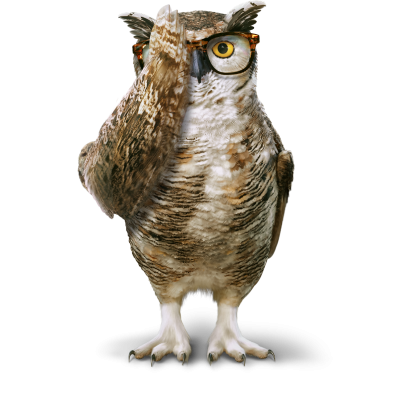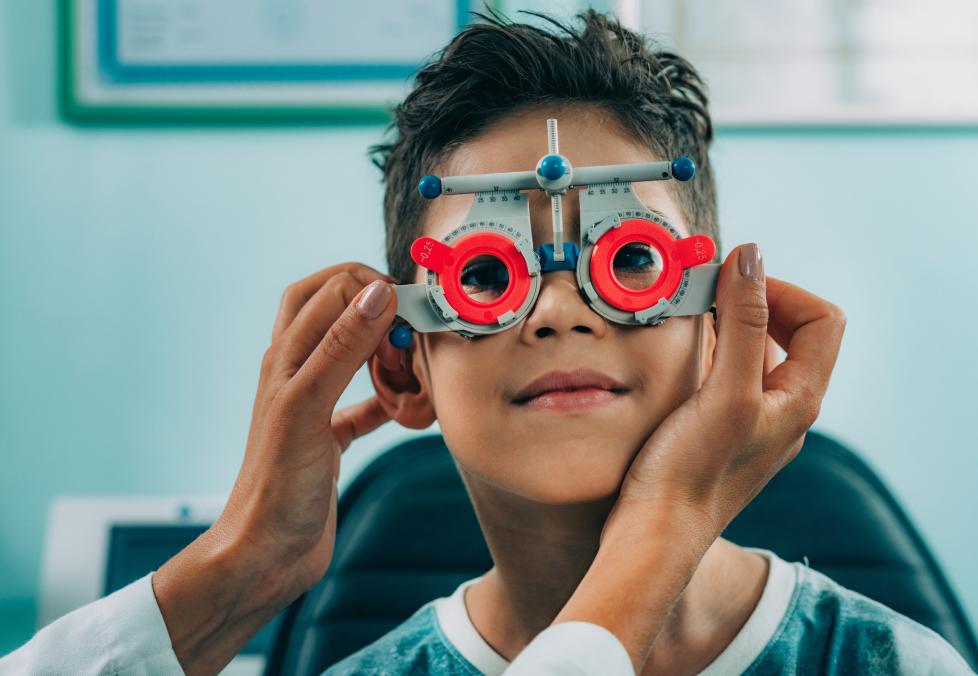
Two pairs and a free, quality eye exam for just $79.95
Everything you need to know to take care of your eyes — for life.
When Mom or Dad says it’s time to go to the eye doctor, here’s exactly what to expect.

It’s no fun squinting to see stuff.
Or getting headaches when you read or do homework.
Luckily, bad eyesight is totally fixable. All you need to do is go to the eye doctor.
And actually, it’s not that bad. It doesn’t take that long. It doesn’t hurt. And the best part—it works! You’ll get a cool new pair of glasses and you won’t have to squint anymore. Or deal with headaches or any of that stuff.
But it’s nice to know what it’s going to be like when you do go. So, here’s what happens when you’re at the eye doctor’s office. It might not happen exactly like this at every office, but pretty close.
Did you know that kids with vision problems should get their eyes checked every year? Click here to find a time that fits your schedule.
One of the eye doctor’s helpers, called a technician, will ask you to look into a boxy-looking thing called an autorefractor.
You’ll see a little picture inside the machine. Sometimes it’s a farmhouse or a hot air balloon. Or an apple on a table.
While you’re looking at the picture, the machine automatically calculates how good (or bad!) your vision is. It does this by measuring how light moves through your eye, which is kind of cool.
Next, they’ll do an air puff test. You’ll stare into another machine called a tonometer. This time, at a little green dot.
Then the machine blows a little puff of air into one eye. The air puff helps measure the pressure in your eye. Too much pressure can eventually hurt your eye, so that’s why they like to measure it.
The air puff doesn’t hurt. It just feels weird. You get one puff per eye and then it’s over.
All that stuff usually gets done by a technician. And don’t worry: They will explain what’s happening every step of the way.
After that, you’ll see the actual eye doctor. Somebody like Dr. Deanna Paul-Blanc. She’s an O.D. in Murfreesboro, Tenn. An O.D. is an optometrist, which is the official name for eye doctors.
Anyway, she’ll ask you a bunch of questions. Dr. Paul-Blanc usually asks what grade you’re in. What you like to do in school. If you like to read. If you like to use an iPad. If you play sports. If you’re having trouble hitting or catching the ball. If you’re getting headaches.
She asks all this stuff because it helps her understand when you’re having trouble with your eyes. Some kids can see things up close really well, but then everything gets blurry if it’s too far away. Other kids have the opposite problem and everything close to them is blurry.
So answering these questions helps Dr. Paul-Blanc kind of see what you see.

Two pairs and a free, quality eye exam for just $79.95
Now it’s time for her to look into your eyes. First, she’ll shine a little flashlight called a penlight right at your eyeballs. It’s pretty bright, but it doesn’t hurt.
She uses it to look at your pupils and make sure they look healthy. The pupil is the round, black spot in the middle of the iris, which is the colored part of your eye.
The next tool the doctor brings out kind of looks like a big spoon. She’ll move the spoon back and forth between your eyes and ask you to look at her ear. Or the wall. Or her nose. She might even ask you if she’s got any boogers!
She’s checking to see how your eyes move. Sometimes the eyes don’t move together right, and when that happens, it can mess up how you see. Like you might have double vision. Or favor one eye more than the other.
You’ll also get to put on a special pair of glasses. They check your depth perception, or how well you can tell if something is near or far away. It’s called a stereopsis (stair-eee-op-sis) test.
With the glasses on, you’ll look at a picture. It might have animals on it. All you have to do is tell her what animals you see.
Now it's time to look into another cool machine called a slit lamp. It's a big microscope with a bright light. When the doctor looks through the microscope, she can see every part of your eye, even the very back.
Once you’re done with all that, you get to look through these giant, crazy, weird-looking glasses. They look like they were made for a robot!
The glasses are actually part of a machine called a phoropter (foe-rop-ter—who names these things?). The machine has a bunch of different lenses inside it. Some of the lenses are really weak, some are really strong, and some are sort of in the middle.
Dr. Paul-Blanc will ask you to look at a line of letters and read the letters out loud. Then she’ll change the lenses, and all of a sudden, the line of letters might look different.
Sometimes the letters look clearer. Sometimes they look fuzzier. All you have to do is tell her when the letters look the clearest.
And don’t worry—there aren’t any wrong answers! Just do your best.
This is actually the coolest part of the eye exam, because the machine is helping her figure out if you actually do need glasses. And if you do need them, it helps your doctor figure out exactly which combination of lenses will give you almost perfect vision.
And that’s pretty much the end of the exam.
Learn more about Kids Eye Exams at America's Best here. And remember, comprehensive exams from our licensed optometrists are free when you purchase any two pairs.
If you need eyeglasses, you’ll get to pick out your own frames before you leave the office. Then the work starts to put the right lenses in your frames. It takes about a week. When you come back to pick them up, you’ll also get a case to keep them safe.
And the whole world will start looking pretty darn good. No more squinting, that’s for sure!
Recommended reading: